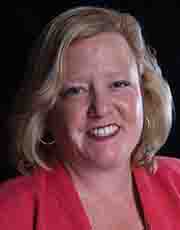
InkHouse Media
The city of Boston is experiencing rapid population and economic growth, and demand for residential and commercial space continues to rise. However, not all of Boston’s neighborhoods have experienced this spur in economic development equally, with much of the concentration in development being in areas like the Seaport and Downtown Boston. But, as Boston continues to grow, new neighborhoods are now poised to see their own chapters of economic development.
Last summer, the city of Boston released Imagine Boston 2030, the first citywide plan in more than 50 years, to help guide growth in all parts of the city, and in turn, ensure that all residents are able to benefit from economic growth. A key part of this plan is expanding neighborhoods that are transit-accessible but have yet to see much in the way of commercial and residential growth.
To help guide this growth, the city is committed to making capital improvements in these neighborhoods to better connect them to the rest of the city. For example, in the Readville section of Hyde Park, the city is working to make traffic signal improvements and in Charlestown, the city is investing $155 million in redesigning Rutherford Avenue and making improvements around Sullivan Square. Strategic infrastructure spending is key to unlocking private-sector investment in non-core neighborhoods. As good urban planning lays the groundwork for capital improvements so, too, does planning lead the way for the commercial real estate community.
This new plan comes after unprecedented growth in some of Boston’s neighborhoods. From January 2014 through last month, the South Boston waterfront was approved for more than 9.1 million s/f of development, Downtown Boston was approved for 5.4 million, and East Boston 3.6 million.
By comparison, Hyde Park was approved for 800K s/f, and Charlestown was approved for 1.9 million.
By investing in and releasing the Imagine Boston 2030 plan, Boston is taking steps to manage growth where the markets are strongest like South Boston and Downtown., but also making investments to ensure that all of the city’s residents and neighborhoods benefit from economic opportunity and job growth. Since this plan was announced a year ago we have already seen the beginning of growth in the neighborhoods outlined as areas for expansion - Sullivan Square, Newmarket and Widett Circle, For Point Channel, Suffolk Downs, Readville, and Beacon Yards - and we look forward to seeing what the next year brings.
As Boston continues to grow, development will continue to accommodate the demand for commercial and residential space. As the City of Boston makes capital investments to neighborhoods to make them even more accessible to workers and residents alike. One year closer to 2030, and we’re already seeing areas across Boston poised for new chapters of economic growth.
Susan Elsbree, is a senior vice president of real estate and development at InkHouse Media, Boston, Mass.








